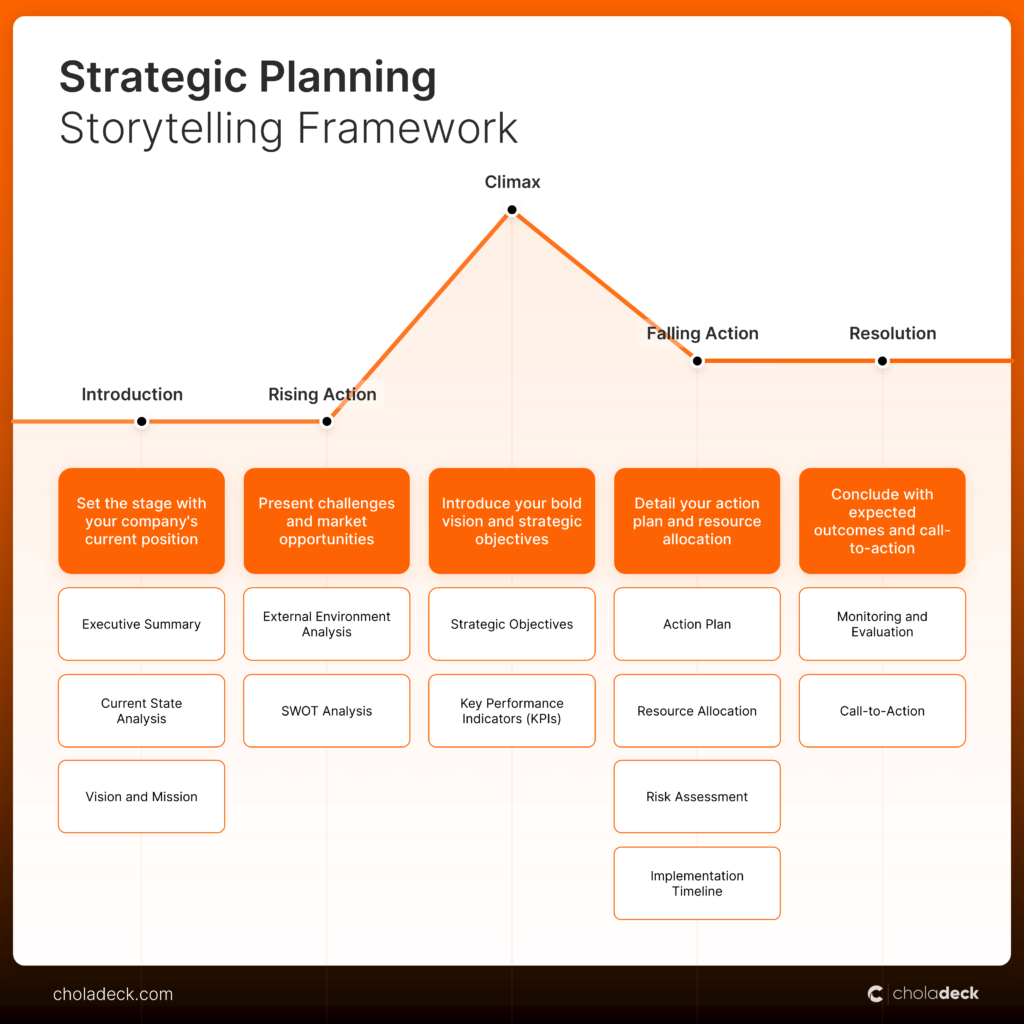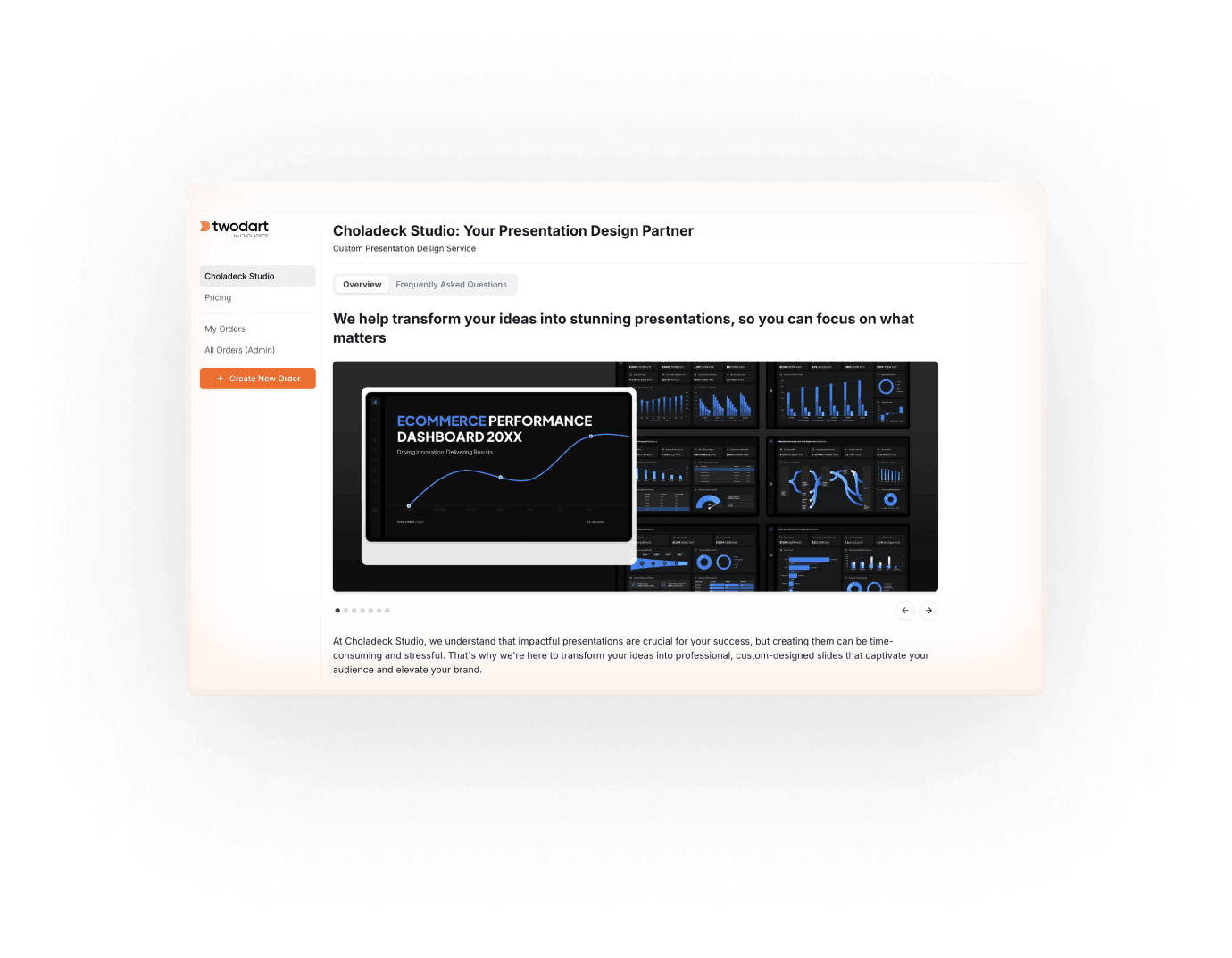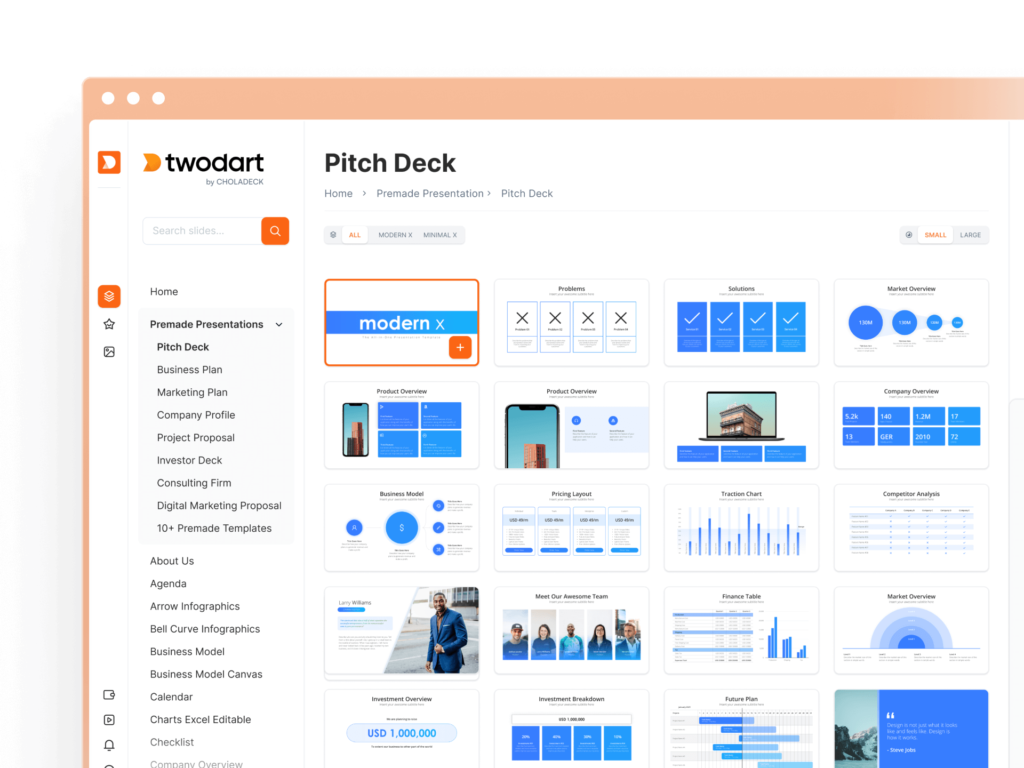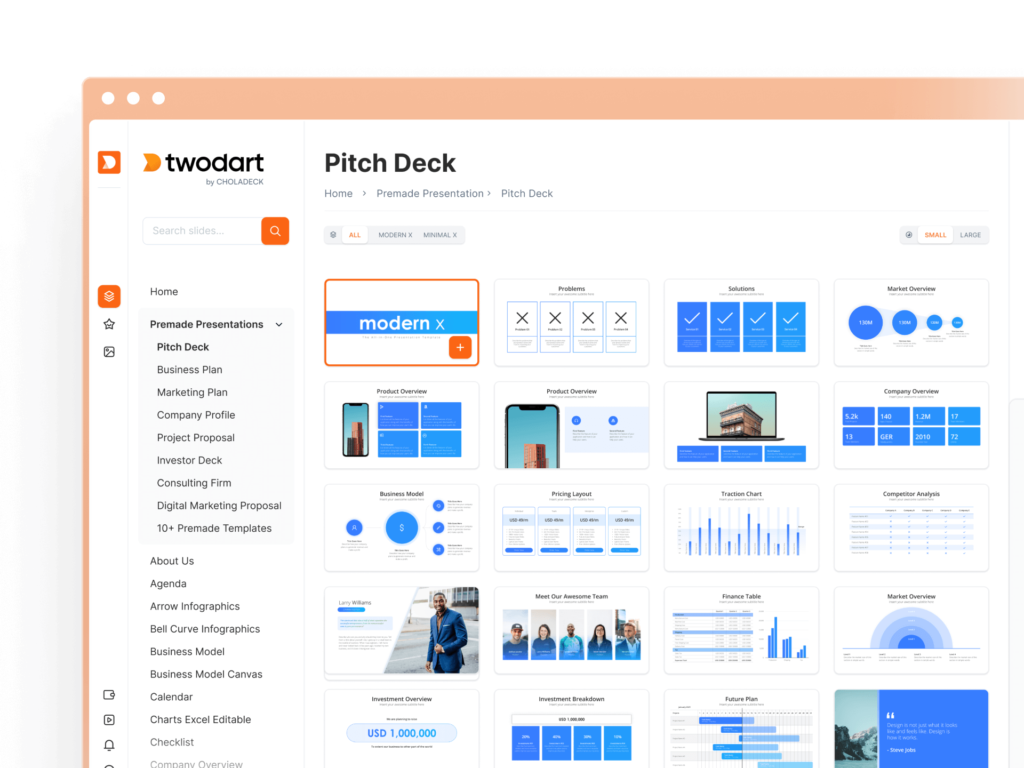In today’s fast-paced business world, having a clear and compelling strategic plan is crucial for success. Whether you’re a startup founder or a seasoned executive, the ability to articulate your vision and roadmap is essential. Let’s explore how our Strategic Planning PowerPoint Template can help you create an impactful presentation that brings your strategy to life.
What is Strategic Planning and Why Does it Matter?
Strategic planning is the process of defining your organization’s direction and making decisions on allocating resources to pursue this strategy. It’s about setting priorities, focusing energy and resources, strengthening operations, and ensuring that employees and stakeholders are working toward common goals.
The purpose of a strategic plan is to:
- Establish overall goals for the business
- Develop a plan to achieve those goals
- Align the organization’s resources and efforts
An effective strategic plan PowerPoint presentation can help communicate these crucial elements to your team, stakeholders, and investors.
Introducing Choladeck’s Strategic Plan PowerPoint Template
Our strategic planning template PPT is designed to guide you through the process of creating a comprehensive and engaging strategic plan presentation. Let’s take a closer look at how our template helps you craft your story:
A Storytelling Approach to Strategic Planning
Our template follows a storytelling approach, helping you create a narrative that engages your audience and clearly communicates your strategy. Here’s an overview of the flow:
1. Start with the end in mind by defining your main objective and key messages.
- For example:
- Your main objective might be “To align our team on a five-year growth strategy targeting a 30% market share increase.”
- Key messages could include “Expanding into new markets,” “Investing in cutting-edge technology,” and “Fostering a culture of innovation.”
2. Create a narrative by developing a story arc for your presentation with a logical flow.
- Our template guides you through this compelling arc for strategic planning:
- Introduction: Set the stage with your company’s current position
- Rising Action: Present challenges and market opportunities
- Climax: Introduce your bold vision and strategic objectives
- Falling Action: Detail your action plan and resource allocation
- Resolution: Conclude with expected outcomes and call-to-action
Strategic Planning Powerpoint Framework
Use our comprehensive framework to structure your story. Each component in our template is explained with descriptions and guiding questions to help you generate content:
- Executive Summary – Think of this as the highlight reel of your strategic plan. It gives readers a sneak peek at the big ideas and critical points they’ll find in the full document.
- Key questions to answers
- What’s the heart of our strategy?
- How will this plan push our organization forward?
- What big changes or initiatives are we putting on the table?
- Key questions to answers
- Vision and Mission – Here’s where you paint a picture of your organization’s dream future and explain why you exist. Your vision is like a snapshot of where you want to be, while your mission is the reason you get out of bed in the morning. Together, they’re the North Star for all your strategic efforts.
- Key questions to answers
- Where do we see ourselves in the long run?
- Why are we here in the first place?
- How are we going to make our mark in our industry or community?
- Key questions to answers
- Current State Analysis – This is like taking a good, hard look in the mirror. You’re sizing up where your organization stands right now – your place in the market, how well you’re performing, and what you’re capable of. It’s all about understanding your starting point before you embark on your strategic journey.
- Key questions to answers
- How do we stack up against the competition right now?
- How are our finances and operations holding up?
- What are we really good at, and where do we need to up our game?
- Key questions to answers
- External Environment Analysis – This is your window to the outside world. It’s about understanding the broader context in which your organization operates, including industry trends, market dynamics, and external factors that could impact your strategy.
- Key questions to answers
- What major trends are shaping our industry?
- How is the competitive landscape evolving?
- What external factors (economic, social, technological) might affect our strategy?
- Key questions to answers
- SWOT Analysis – Think of this as your organization’s report card, but one that also looks at what’s happening around you. You’re identifying your strengths and weaknesses, and also spotting opportunities and threats in the world outside. It’s all about getting a 360-degree view of factors that could impact your strategy.
- Key questions to answers
- What makes us stand out from the crowd?
- Where could we use some improvement?
- What’s happening in the market that we could take advantage of?
- What should we be watching out for that could trip us up?
- Key questions to answers
- Strategic Objectives – These are your big, bold goals – the ones that are specific, measurable, and have a deadline. They should line up with your vision and mission, giving everyone clear targets to aim for.
- Key questions to answers
- What do we want to achieve in the next few years?
- How do these goals tie back to our overall vision and mission?
- How will we know if we’re making progress?
- Key questions to answers
- Key Performance Indicators (KPIs) – These are the metrics you’ll use to track your progress towards your strategic objectives. They’re the vital signs of your strategy, helping you understand if you’re on the right track.
- Key questions to answers
- What specific metrics will indicate success for each objective?
- How often will we measure these KPIs?
- What benchmarks are we aiming for?
- Key questions to answers
- Action Plan – This is where the rubber meets the road. It’s a detailed game plan that spells out the specific steps, projects, and initiatives you’ll take to reach your objectives. It assigns responsibilities and sets deadlines, turning your big-picture strategy into concrete actions.
- Key questions to answers
- What specific projects or initiatives will move us towards each objective?
- Who’s going to take the lead on each major task?
- What are the big milestones we need to hit, and by when?
- Key questions to answers
- Resource Allocation – This is about making sure you have the right tools for the job. You’re planning how to distribute money, people, and technology across your various strategic initiatives. It’s all about ensuring each part of your strategy has the backup it needs to succeed.
- Key questions to answers
- How should we divide our budget across these initiatives?
- What kind of manpower do we need to make this happen?
- Are there any tools or technologies we need to invest in?
- Key questions to answers
- Risk Assessment – Here’s where you put on your detective hat and look for potential roadblocks. You’re identifying obstacles that could throw a wrench in your plans, and figuring out how to deal with them. It’s all about being prepared for whatever might come your way.
- Key questions to answers
- What could potentially derail our strategy?
- How likely are these risks, and how bad would it be if they happened?
- What can we do to prevent these risks or minimize their impact?
- Key questions to answers
- Implementation Timeline – Think of this as your strategic roadmap. It lays out when you’re going to do what, including major phases, key activities, and important deadlines. It’s about turning your strategy from a plan on paper into real-world action.
- Key questions to answers
- What are the main stages of putting our strategy into action?
- When do we expect to wrap up each major initiative?
- What are the make-or-break deadlines we absolutely have to meet?
- Key questions to answers
- Monitoring and Evaluation This is your feedback loop. It’s a systematic way to keep tabs on how you’re doing, measure your results, and make tweaks to your strategy as needed. It’s all about making sure your plan stays relevant and effective as time goes on.
- Key questions to answers
- How often are we going to step back and check our progress?
- What key performance indicators will tell us if we’re on the right track?
- How will we pivot if we find we’re not hitting our marks?
- Key questions to answers
Designing Your Strategic Plan Presentation with Our Template
Now that we’ve explored the components of a strategic plan and how they fit into a compelling narrative, let’s look at how our strategic planning PowerPoint template helps you bring this story to life visually.
- Professional Design: Our template provides a polished, professional look right out of the box. Each slide is crafted to showcase your strategic plan elements effectively.
- Consistent Branding: Easily customize colors, fonts, and logos to align with your company’s brand guidelines. Our template maintains visual consistency throughout, reinforcing your professional image.
- Data Visualization: We’ve included a variety of charts, graphs, and diagrams to help you present data clearly and impactfully. From SWOT analysis matrices to KPI dashboards, you’ll find the right visual for each part of your plan.
- Versatile Layouts: Whether you’re presenting financial projections, timelines, or team structures, our template offers a range of layouts to suit different types of content.
- Image and Icon Library: Access a rich library of images and icons to illustrate concepts quickly and effectively, enhancing the visual appeal of your presentation.
By leveraging these design features, you can create a strategic plan presentation that not only communicates your ideas effectively but also captivates your audience visually. Our template takes the guesswork out of design, allowing you to focus on crafting your strategic narrative.
Elevate Your Strategy with Choladeck’s Strategic Plan Template PPT
Crafting an effective strategic plan is crucial for business success, but presenting it in a way that engages and inspires your audience is equally important. With Choladeck’s Strategic Planning PowerPoint Template, you have the tools to do both.
Our template not only guides you through the strategic planning process but also helps you create a visually stunning presentation that tells your strategy’s story. By combining professional design, intuitive structure, and flexible customization options, our template empowers you to:
- Clearly communicate your vision and objectives
- Engage your audience with a compelling narrative
- Present complex data in easily digestible visuals
- Maintain a professional and consistent brand image
- Save time and focus on crafting your strategy, not designing slides
Whether you’re a seasoned executive or crafting your first strategic plan, our template provides the framework and design elements you need to succeed.
Ready to take your strategic planning to the next level?
Try our strategic planning PowerPoint template absolutely free.
Register now and start crafting your path to success!





